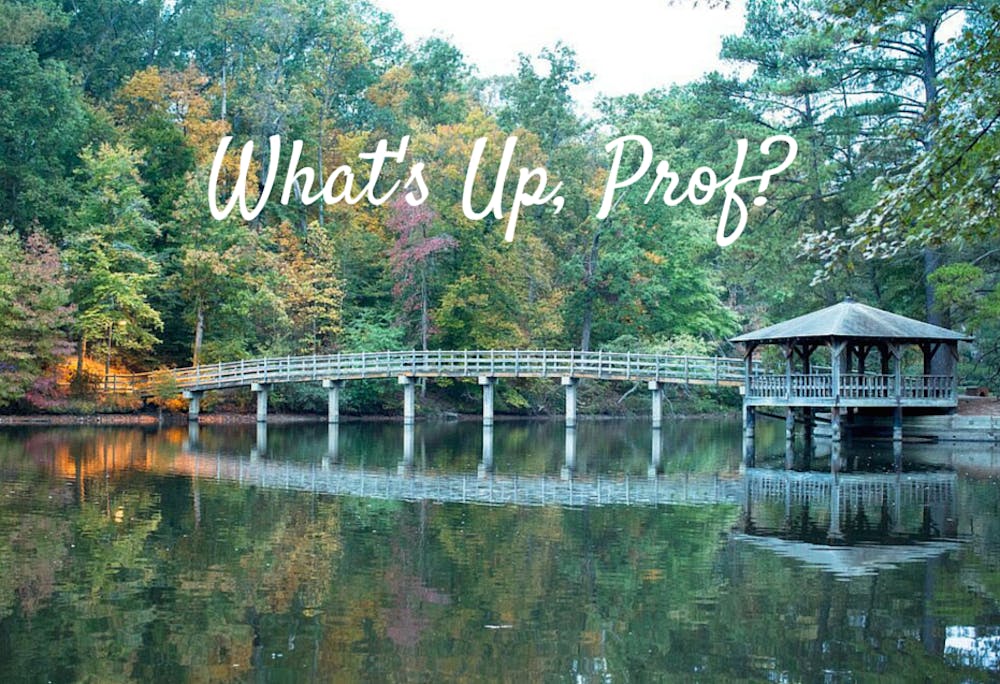What's up, prof? is a Q&A series where The Collegian asks a University of Richmond professor five questions on a prominent current events topic that align with their expertise.
Dylann Roof opened fire in an African-American church in Charleston, S.C., June 17, killing nine people. In the days after the mass shooting, further information, including photos of Roof posing with the Confederate Flag and a racist manifesto, revealed Roof's racial motive. Debate surrounding the Confederate Flag, what it represents and where it should fly ignited both in Charleston, where the state government approved for the Confederate Flag to be removed from the statehouse, and throughout the South, including Richmond. Virginia Gov. Terry Mcauliffe (D) has pushed for the removal of license plates sporting the Confederate Flag, and Virginia's Department of Motor Vehicles began recalling these license plates in August. Still, large, beautiful statues on Confederate War heroes line Monument Avenue, whose worth has been debated following the Charleston shootings.
 Edward Ayers, President Emeritus of the University of Richmond and a leading scholar on the history of the American South, joined The Collegian to help us make sense of Richmond's affiliation with the Confederacy and how best to preserve its history.
Edward Ayers, President Emeritus of the University of Richmond and a leading scholar on the history of the American South, joined The Collegian to help us make sense of Richmond's affiliation with the Confederacy and how best to preserve its history.
Jack Nicholson: The Richmond Times-Dispatch quotes you as saying there’s “growing discomfort” over Richmond’s strong identification with the Confederacy. Why is there, using your words, this growing discomfort?
Edward Ayers: People of good will recognize that the images and rhetoric of the Confederacy have been used since the time of the Civil War itself to infringe on the rights and dignity of African Americans. The frequent invocation of the battle flag, in particular, by white supremacists has branded that symbol as particularly virulent. The celebration of the heroes of the Confederates by previous generations of white Southerners intent on states rights and segregation makes many people uncomfortable with the statues that adorn our most famous street.
JN: Why does Richmond have such a strong identification with the Confederacy in 2015?
EA: For several reasons. First, the city was indeed the capital of the Confederacy, with its leaders and its government here. Second, Richmond, because it was the capital as well as the major industrial city of the Confederacy, was a major objective for the four years of war. Over 40 percent of all the men, from the North and the South, who died in the Civil War died within 150 miles of Richmond and 18,000 soldiers from across the South are buried in Hollywood Cemetery. For all of those reasons, Richmond became a shrine for many white Southerners for generations after the war, the place where the Lost Cause was celebrated year after year.

JN: In a New York Times story you’re quoted as advocating for the joining of the Museum of the Confederacy and the American Civil War Center -- two museums the Times portrays as having different interpretations of the Civil War -- saying the joint effort will reveal the war’s “power and its mystery.” As chairman of the new museum’s board, how and why do you think this museum will accomplish this?
EA: I’ve agreed to chair that board because I think it is important for the nation, as well as for Richmond and Virginia, that we have a museum that tells the story of the American Civil War in as inclusive a way as possible. That is the goal of the new museum and the work that has gone into its creation is impressive and heartening. It will be a major reason that people will come to Richmond from all over the world in future generations. As we have seen recently, it is important that we have places where the meanings of the Civil War are explored.
JN: Following the Charleston shooting, Richmond Mayor Dwight Jones said he would rather add to Monument Avenue than take statues down. Do you think Richmond should make any changes to Monument Avenue?
EA: As I said in an article in the Times-Dispatch, whatever ultimately happens to the statues we need to explain to visitors why they are there: when they were erected, by whom, for what purposes, and how they have been resisted ever since. It may be that they will someday be gathered into a kind of museum setting; in the meantime, they can serve as a way for people better to understand where the iconography of the Confederacy came from and what work it has done.
JN: Politicians both in Virginia and around the country have condemned the use of the Confederate Flag following the Charleston shooting. What differentiates the confederate flag with the statues on Monument Avenue?
Enjoy what you're reading?
Signup for our newsletter
EA: Mainly because they are less fully associated with the resistance to the Civil Rights struggle. Not everyone knows who Jefferson Davis, not to mention Matthew Fontaine Maury, were, but the Confederate battle flag is widely recognized as a symbol of resistance to authority and to black Americans.
Contact editor-in-chief Jack Nicholson@richmond.edu
Support independent student media
You can make a tax-deductible donation by clicking the button below, which takes you to our secure PayPal account. The page is set up to receive contributions in whatever amount you designate. We look forward to using the money we raise to further our mission of providing honest and accurate information to students, faculty, staff, alumni and others in the general public.
Donate Now



